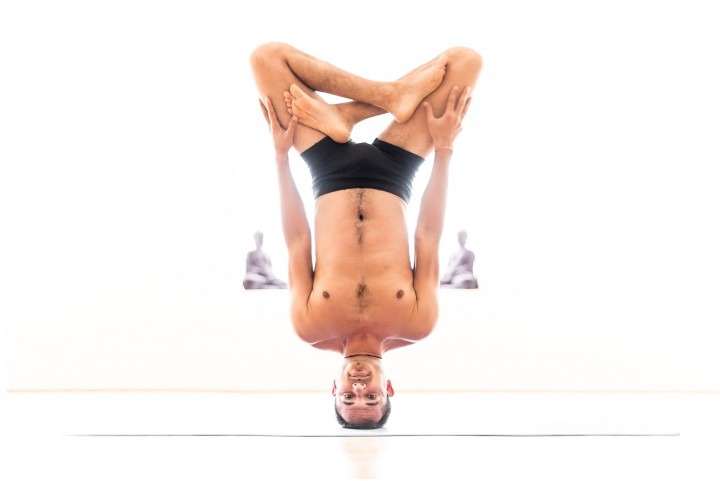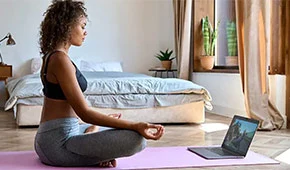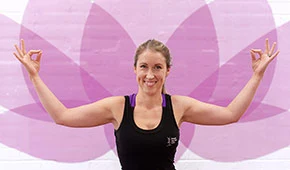
Theres always one…that ever elusive bakasana, the head stand that can bring tears to your eyes even though you’ve only ever thought about doing it, the forward fold that just won’t unfold. Most everyone has an asana that seems to always be just out of reach and sometimes even smirking at you..
One of the most important things I have been taught in India as a yoga student is that even when that asana is finally in reach we still don’t get to “own” it. Have you ever “Conquered” an asana on Monday only to face plant while trying it on Tuesday? Ever suddenly lost the ability to practice Tree posture and found yourself shaking your hips like a belly dancer instead whilst depserately trying to maintain balance- even though your tree seriously rocks the forest normally? Yep that’s yoga! Teaching us impermanence, humility and non attachment every time we practice.
I met a wonderful teacher in Rishikesh who prescribed “no asana for you!” when I complained about not being able to “do” an asana. It was not the instruction I expected. I wanted to talk weight-bearing and the likes not sit on the yoga naughty step… I literally had to sit in the class while everyone else practiced around me and have a good old think about why I wasn’t allowed to join in. It didn’t take long to realize that if I couldn’t appreciate all of the amazing feats my body was performing without grasping for one asana that I couldn’t “get” maybe I did just need to sit for a while and contemplate my attitude. I saw the greed in my intention and looking back I can see how that greed was coming from a place of inadequacy and self-doubt rather than a more healthy approach of achieving without getting stuck on the outcome.
We have hundreds of students attend our school every year and I have found that the right kind of Scorpion can really teach a student one of the most important lessons of yoga. Not the lesson of inverting with our feet touching our heads but rather the lesson of Ahimsa- Non Violence.
Often we see students trying to practice many of the advanced asanas without the principle of Ahimsa. Many students arrive with injuries which occurred because they have pushed their bodies too far. Ahimsa certainly applies to the physical world but our inner world should also be considered when we want to take a non violent approach to our practice.
Many students also present with inner injuries from practicing asana without Ahimsa. We have had students come to our school feeling entirely defeated by their entire asana practice because they cant’ “get” a certain posture. This trend of “getting” an asana seems to on the increase since yoga boomed as a physical practice in the west. People have begun to move from a peaceful, connective internal practice to worrying about why they can’t do what the girl or guy on the mat next to them can.
Teachers that bring competition, pushy language and comparisons to their classrooms are doing their students a serious disservice and quiet often injuring them as well. I have a friend who tore her hamstring on her first yoga class when a teacher told her to “push past the point of flexibility”. Ouch. In so many ways.
Yoga should challenge us physically without ever being violent in nature. Anyone who has taken Lalit’s classes will be aware that it’s no walk in the park! He is a teacher who expects discipline and commitment from his students but you will also often hear him say “don’t push, don’t force”. Progression and achievement are both positive parts of practicing yoga. They also come naturally when we stop pushing our bodies and start respecting ourselves by challenging without forcing.
I really “got” that posture I was complaining about when my teacher taught me to sit still and realize that I didn’t need to “get” it in the first place. Yes I can now physically get into the posture I try not to do so without the awareness that if I don’t that’s ok too.
Yoga is a complete science. Not paying attention to the non physical aspects of this science can create major imbalances both within our practice and in our lives. As teachers it can be hard to deliver a class with all of the elements of yoga as it was originally designed to be practiced however there are some things we can do to promote Ahimsa for our students.
- Be an example- we always encourage our teachers to modify some asanas during their class. At our drop in centre in Goa the wonderfully accomplished teachers we employ will often only go into the posture partially whilst using props. Our students who are new to yoga really appreciate the permission they receive to use modifications. It’s also important to show our limitations as teachers which removes competition and students putting you on a pedestal.
- Honour the source- Lalit will always mention his masters during class, either by doing a certain mantra for teachers or just letting people know that he received what he is teaching from somewhere else. This practice is very common in India and this can really eliminate the greed and ownership that can sometimes crop up in yoga.
- Encourage positivity- Yoga is meant to be enjoyable and make us happy. People are often surprised when they travel all the way to India and their teacher cracks a few jokes and has a giggle. You can encourage peace, stillness and connection to the self but warmth and laughter at the right time can bring all of the above into people’s lives. Enlightenment means to get lighter, not heavier.
- Awareness- bring awareness to the fact that the practice of yoga asana is just that, a practice that expands to our entire life. Even if outwardly someone has achieved what looks like the most optimal yoga asana practice but on the inside they are beating themselves up then its just someone making shapes while being hard on themselves. One of our wonderful students summed it up when she shared with the class “It’s a yoga practice not a yoga perfect”.
- Physiology- when our body is stressed it shuts down rather that opens up. If your students are shaking, straining are holding their breath or are in pain the body will not reward them by opening up the muscle for more exposure to danger. It will however shorten the muscles and close off in an attempt to protect itself.
- Some light reading- encourage your students to read up on the 8 limbs of yoga. The most simple, effective and all encompassing guide every student and teacher has to refer to.
Enjoy your practice everyone!
Much love from all of us at Himalaya Yoga Valley Centre xxx





